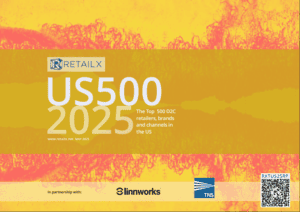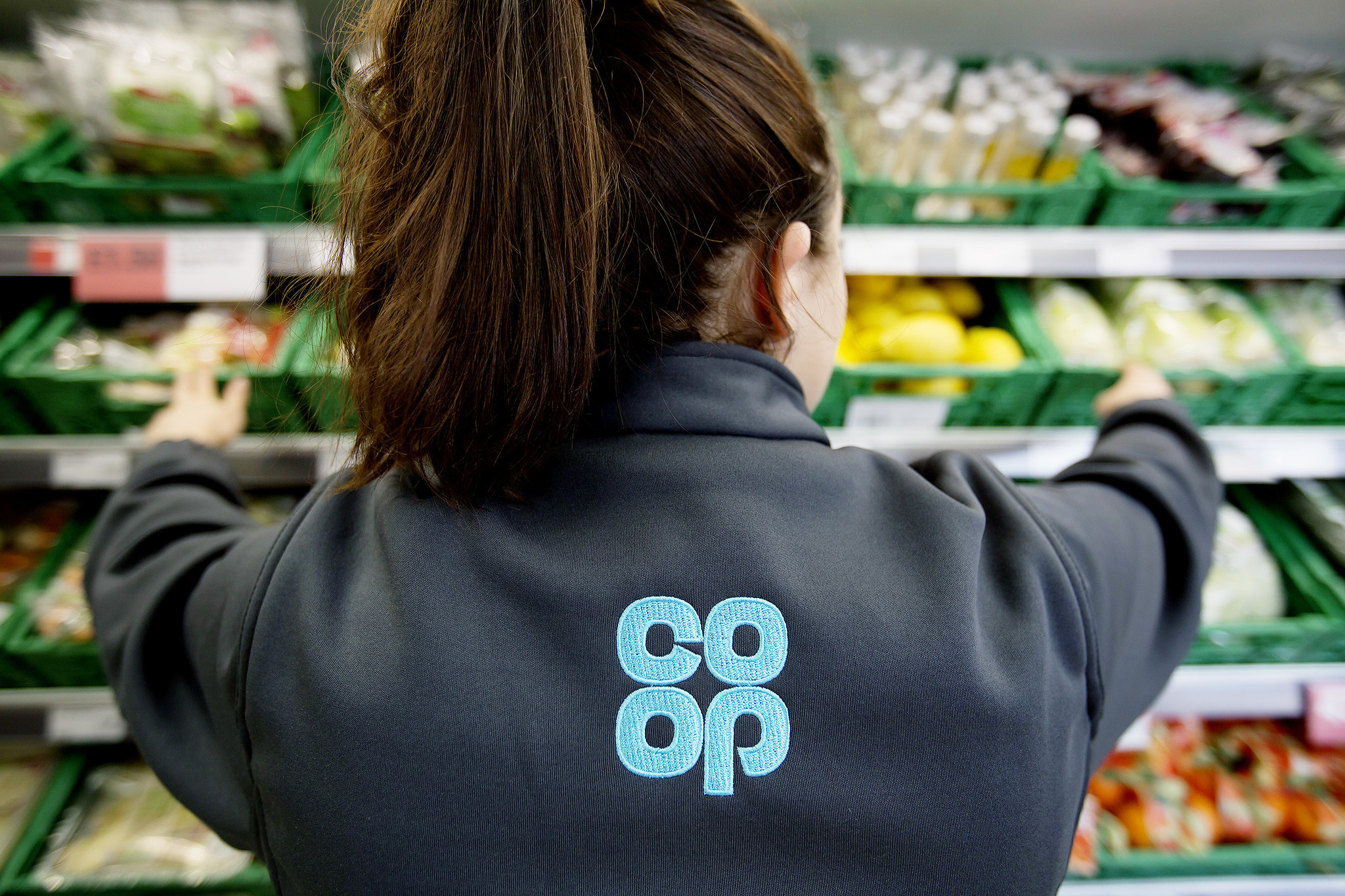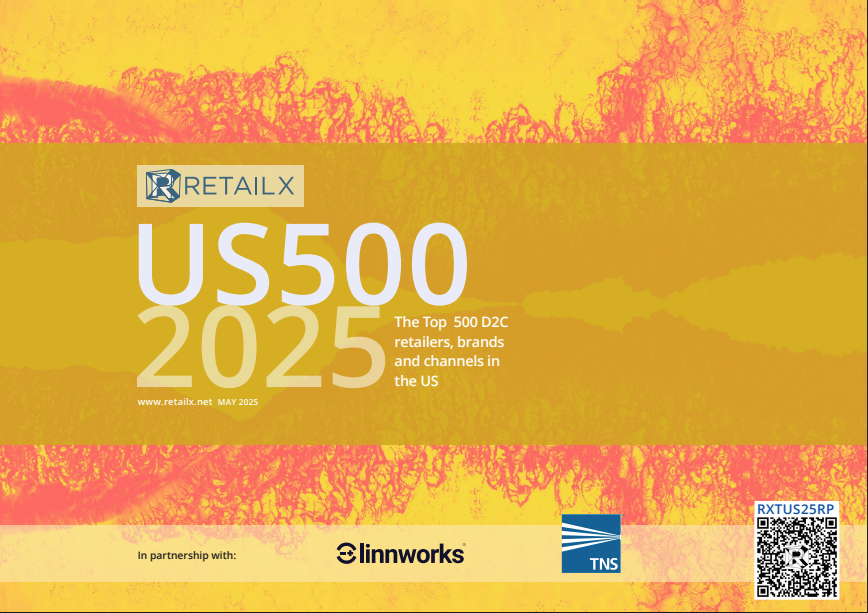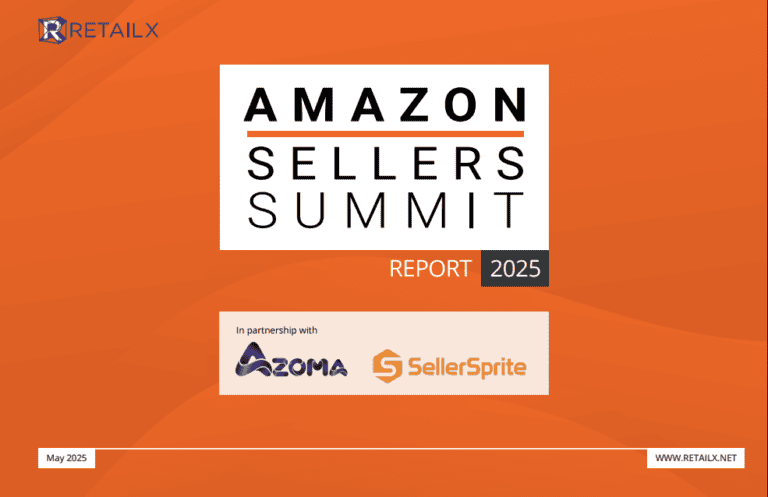Since Donald Trump returned to the White House in January 2025, US shoppers and the retailers that sell to them have been living through mounting economic uncertainty, according to the brand new RetailX US500 2025 report.
The retail basics of how shoppers prefer to buy remain unchanged, however, so those traders who build their services around their customers’ wants and needs will be the ones best-placed to trade through these challenges.
Demographic context
With a large and prosperous consumer economy, the US market offers strong opportunities to retailers, brands and marketplaces from around the world, in a way that’s reflected in the US Top500 and the Challenger 500 listed in this report.
The US population, put at 346.8mn by Worldometers in March 2025, is behind only India and China, by size, while OECD wage statistics put the US fourth internationally, with an average annual wage of $80,115 in 2023.
In 2024, of 109.2mn US workers who were aged 25 or older, 50.99mn (46.6%) were educated at least to degree level, according to BLS (Bureau of Labour Statistics) data. While the median worker earned up to $1,221 a week, the median worker with at least a degree earned $1,543. Some 82.8% of the US population lives in an urban area, putting a large majority in reach of a wide range of shops and fast
online delivery services.
It’s fitting, then, that ConsumerX data from RetailX Intelligence suggests that 24.9% of US shoppers want to have products in their hands the same day that they buy it. 26% say that in the previous year, they have always or mostly paid extra for same-day delivery, while the same proportion have paid for next-day delivery.
The US is a nation of smartphone shoppers, with 70.4% always or mostly using them when buying online. Shoppers buy online fairly regularly. The largest group (36.8%) does so more than once a month and spends between $13 and $130 (30%), followed by those that spend between $130 and $320 (27%).
The economic context
The return to Donald Trump to the White House has been followed by economic uncertainty, thanks to rapidly-changing policies on tariffs and ambitions to make significant numbers of public workers redundant, thereby hitting purchasing power.
At the time of research, in mid-May 2025, Yale’s Budget Lab puts US tariffs at an overall effective rate of 17.8% – the highest since 1934. They start at 10% on imports from all countries, with small exceptions including zero-rated imports on products including steel and the first 100k cars from the UK, negotiated
through a new US UK trade deal. This situation, calculates the Budget Lab, is likely to mean a $2,836 decline in average real disposable income per household per year, with knock-on effects including a 0.35 percentage point increase in unemployment.
Holding its key interest rate at between 4.25% and 4.5%, the Federal Open Market Committee at the Federal Reserve said, in its May 2025 statement, that “uncertainty about the economic risk has increased further.” It added: “The committee is attentive to the risks to both sides of its dual mandate and judges that the risks of higher unemployment and higher inflation have risen.” It reiterated its commitment to supporting maximum employment and returning inflation to its 2% target rate and said that it would adjust rates if the situation changes.
The US Bureau of Economic Analysis has suggested that GDP (gross domestic product) fell from 2.4% in the fourth quarter of 2024 to an advance estimate of -0.3% in the first quarter of this year. This, it said, primarily reflected an increase in imports, likely as merchants stocked up.Goldman Sachs analysis has
put the risk of a US recession at 45%.
Headline inflation slowed in April, to 2.3%, from 2.4% in March, according to the Bureau of Labor Statistics. However, core inflation, which excludes energy and food prices, rose to 2.8% from 2.4%.
The retail context
The US National Retail Federation (NRF) predicted earlier this year that shoppers will spend between 2.7% and 3.7% more in 2025, compared to 2024. That would take 2025 retail spending to between $5.42tn and $5.48tn. At the time, NRF president and CEO Matthew Shay pointed to low unemployment and growth in real wages, despite “significant policy uncertainty”. He added: “Serving customers will remain retailers’ top priority no matter what the economic environment.”
The forecast was made days before Donald Trump’s 02 April initial decision to raise tariffs sharply on markets around the world, which was immediately followed by sharp stock market falls both in the US and around the world. Since then, stock markets have recovered to a certain extent as tariff rates have been moderated.
The NRF’s latest available retail sales figures, for April 2025, suggest that shoppers bought that month to beat the higher prices expected to come with the tariffs. Total retail sales, excluding cars and fuel, rose by 0.72% on the previous month and were 6.76% ahead of April 2024, according to the CNBC/ NRF Retail Monitor for that month.
In March, the NRF recorded a monthly increase of 0.6% and an annual increase of 4.75%. During April, many US retail websites flagged ‘pre-tariff’ prices to encourage sales, while the NRF has also campaigned by asking its members to “tell Congress about the impact of increased costs and uncertainty from tariffs today.”
The NRF’s Matthew Shay said of the April retail figures: “Despite declines in confidence caused by the economic uncertainty that has come with tariffs, consumer fundamentals remain intact, supported by low unemployment, slower-but-steady income growth and solid household finances. Consumers maintain their ability to spend and have strong reasons to spend now before tariffs can drive up prices or cause shortages on store shelves.”
This is an excerpt from the newly published RetailX US500 2025 report. This first edition assesses the performance of the top 500 ecommerce and multichannel retailers, brands, and marketplaces operating in the US market.
It also lists the subsequent “Challenger 500”. The research aims to provide insights into the US retail landscape, consumer behaviour, and the strategies employed by leading retailers to navigate economic uncertainties and meet evolving customer expectations.
Stay informed
Our editor carefully curates two newsletters a week filled with up-to-date news, analysis and research, click here to subscribe to the FREE newsletter sent straight to your inbox and why not follow us on LinkedIn to receive the latest updates on our research and analysis.










